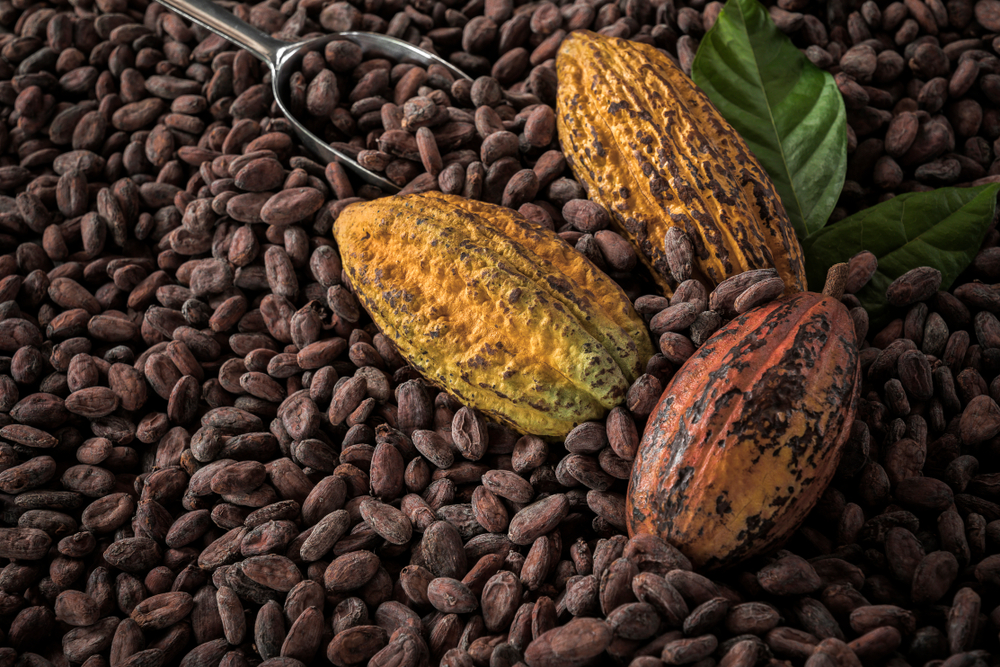Will rising cocoa prices trigger a world chocolate crisis?
Why are cocoa prices rising?
The rise in cocoa prices is largely due to a global cocoa shortage. Climate change-induced drought has ravaged crops in West Africa, which contributes around 80% of the world’s cocoa output. According to the International Cocoa Organization, global cocoa supply will decline by almost 11% over the 2023/2024 season.
There are also deep-rooted structural issues at play, including chronic underinvestment in cocoa farms. Today, the crop is still largely cultivated by smallholder farmers, many of whom struggle to make a living income and lack the means to reinvest in their land — which translates to lower yields over time. “Cocoa is a market where the grower produces a very high-value good but receives a very low share of the actual value chain. As a result, replanting rates are very low and cocoa trees are ageing,” said Tracey Allen, an Agricultural Commodities Strategist at J.P. Morgan.
This is all further compounded by investor speculation, which is driving prices up. “What was a structurally led, supply-side issue has been exacerbated by dry weather and a strong Harmattan [a season in West Africa]. It has now manifested in an investor-driven parabolic move in prices, especially over the last six weeks,” Allen added. “For instance, non-commercial investors now hold over 60% of total open interest across cocoa futures and options in the New York market, which is an historical high. Consumers are now scrambling to hedge forward exposure in thin liquidity.”

What’s the impact on chocolate makers
Chocolate brands are grappling with the impact of higher cocoa costs, and many are passing on the burden to consumers in the form of price hikes.
“In the U.S., Hershey has been very clear that list pricing is still one of the most important arrows in their quiver to offset inflation. Over the next year or two, they will probably pass on more cocoa inflation, and consumers will see higher prices for their chocolate as a result,” said Ken Goldman, Lead Equity Research Analyst for U.S. Food Producers and Food Retailers at J.P. Morgan. “I’m sure Hershey’s competitors like Mars and Lindt are going to do the same — it’s just a matter of time.”
This could, however, dampen consumer demand. “Companies will have to be careful about how they manage the elasticity of demand for chocolate, especially as consumers might not be able to take the price hikes needed to offset the huge increase in cocoa costs. We see an impact on volume whenever prices are raised, even in other categories that are deemed inelastic,” said Celine Pannuti, Head of European Staples & Beverages at J.P. Morgan.
Indeed, chocolate sales have already taken a hit. “In the U.S., snacks in general have been slumping a little bit over the last two months, likely because they are a little bit more discretionary in nature. Within the category itself, we have seen some shifting away from chocolate to other products, whether that’s cookies or salty snacks,” Goldman added. “We think chocolate’s losing a bit of share, so consumers are certainly reacting to higher prices.”
In a bid to regain market share, some manufacturers are innovating with recipes that call for less cocoa — for instance, chocolate bars containing a higher proportion of fruits and nuts — while others are reducing the size of their products. “We’ve seen cases of shrinkflation, so for the same price, the chocolate bar is much smaller,” Pannuti noted. “But while these are some avenues that companies are taking, consumers will ultimately have to face up to higher prices.”

















Will cocoa prices continue to surge?
While J.P. Morgan Research projects cocoa prices will remain elevated, they are expected to come down slightly over the medium term, tracking around the $6,000 mark.
“The market has been well overshot, so I wouldn’t be surprised if prices move off the peak before stabilizing at an elevated level, until there is a genuine supply-side response,” Allen noted.
The latter could materialize thanks to global climate patterns, which could increase yields in some cocoa-producing regions. The ongoing El Niño phenomenon (the warming of sea surface temperatures) is gradually weakening, which could herald a transition to La Niña (the cooling of sea surface temperatures) in the summer. “Under this scenario, weather threats would diminish and we should receive improved rainfall across West Africa and Asia,” Allen said. “This would be supportive of main crop output from over 80% of the world’s cocoa-producing countries including Côte d’Ivoire and Ghana, paving the way for cocoa prices to ease off the historic highs. Increasing cacao plantings will be critical to boost longer-term supply.”
